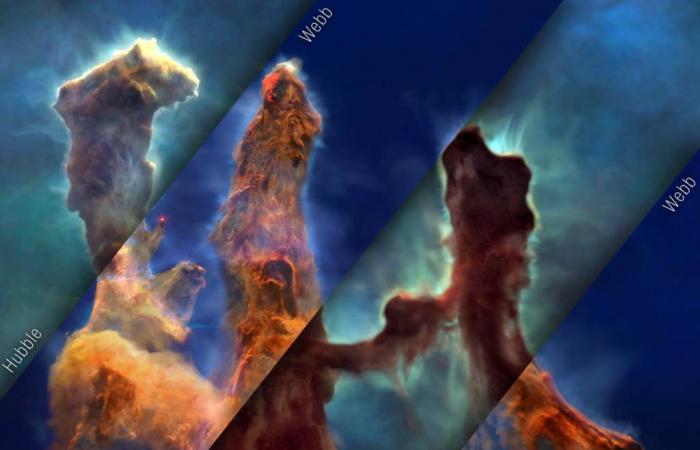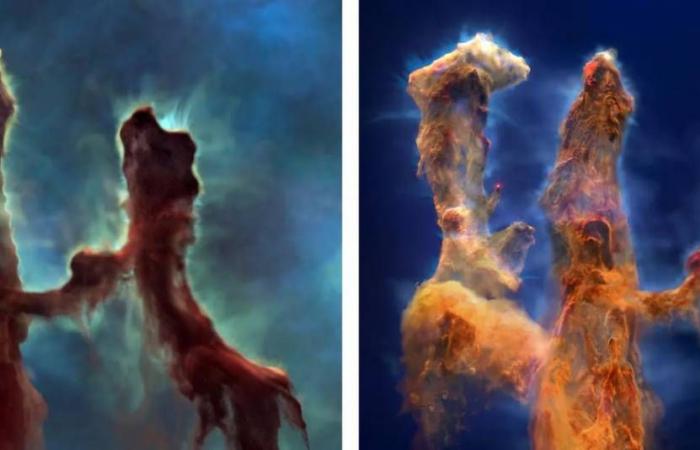NASA revealed a 3D visualization of the Pillars of Creation, using data from the Hubble and James Webb space telescopes. This sequence at multiple wavelengths It is the most complete and detailed to date of these star formations.
The Pillars of Creation, located in the heart of the Eagle Nebula, gained fame in 1995 thanks to Hubble and they fascinated the world with their stunning beauty. Now, with the help of the James Webb, NASA offers a three-dimensional view that allows viewers to experience its structure and compare the differences between Hubble’s visible light and Webb’s infrared light.
“By flying alongside and between the pillars, viewers experience their three-dimensional structure and see how they look different in Hubble’s visible light view compared to Webb’s infrared light view,” said Frank Summers of the Institute of Science. of the Space Telescope (STScI) in Baltimore, who led the development of the film for NASA’s Universe of Learning program. “Contrast helps us understand why we use more than one telescope to observe the same object.”
These pillars, composed mainly of cold molecular hydrogen and dust, are being eroded by winds and ultraviolet light from nearby young stars. Finger-like structures bigger than the solar system, They protrude from the top of the pillars. Stars may be being born within these fingers. The tallest pillar spans three light years, almost the distance between our sun and the nearest star.
The movie offers an interpretation based on observation data, according to a scientific paper led by Anna McLeod, an associate professor at Durham University in the United Kingdom, who was also a scientific advisor on the project.
“We always had in mind creating the pillars of 3D creation. Webb data combined with Hubble data allowed us to see the pillars in greater detail.”said Greg Bacon, director of production at STScI. “Understanding the science and how to best represent it allowed our small, talented team to rise to the challenge of visualizing this iconic structure.”
New visualization shows how telescopes work together to provide a more complex and complete picture of the pillars. While Hubble sees objects that shine in visible light, at thousands of degrees, Webb, with its infrared vision, is sensitive to cooler objects and can penetrate dust to see stars embedded in the pillars.
“When we combine observations from NASA’s space telescopes at different wavelengths of light, “we expand our understanding of the universe”said Mark Clampin, director of the Astrophysics Division at NASA Headquarters in Washington. “The Pillars of Creation region continues to offer us new knowledge that sharpens our understanding of how stars form. Now, with this new visualization, everyone can experience this rich and captivating landscape in a new way.”
The visualization highlights several stages of star formation. Approaching the central pillar, viewers can see an infant protostar glowing red in infrared light. Near the top of the left pillar, a diagonal jet of material ejected from a newborn star is visible, although the star itself is not seen. Finally, at the end of one of the “fingers” protruding from the left pillar, a new glowing star is revealed.
NASA reveals a 3D visualization of the Pillars of Creation, combining data from Hubble and James Webb to show unprecedented detail. (POT)
*The creation of this content was assisted by artificial intelligence. The information was provided and reviewed by a journalist to ensure accuracy. The content was not generated automatically.







